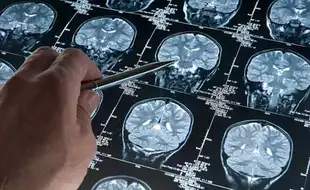News
Hailey Bieber Suffered A ‘Mini-Stroke’ At 25; Know The Symptoms And Risk Factors

Hailey Bieber Suffered A ‘Mini-Stroke’ At 25 (Picture credit: Instagram/ Hailey Bieber)
Hailey Bieber, in 2022, revealed that she was hospitalised for a ‘mini-stroke.’ In March 2022, the 25-year-old model was eating breakfast with her husband, Justin Bieber, when she felt a sudden shooting pain down her arm. Her husband asked her if she was Ok and she could not respond. She said, “I couldn’t speak. The right side of my face started drooping, I couldn’t get a sentence out.”
She was taken to the hospital, however, by the time, her symptoms had subsided. The results of her tests showed that she had a small blood clot in her brain, which had resolved on its own. This is also known as a transient ischemic attack (TIA).
She also revealed that she underwent additional testing and the doctors “found that I had a grade 5 PFO [patent foramen ovale], which is the highest grade that you can have. Mine was fairly large.”
She added, “My blood clot escaped through the flap, or the hole, in my heart and travelled to my brain, and that was why I had my TIA.” She underwent successful surgery to close the PFO.
What is a mini-stroke or transient ischemic attack?
TIA is a short period of symptoms similar to those of a stroke. It is caused by a brief blockage of blood flow to the brain. A TIA usually lasts only a few minutes and doesn’t cause long-term damage. Mayo Clinic says that about 1 in 3 people who have a TIA will eventually have a stroke, with about half occurring within a year after the TIA.
A mini-stroke can serve as both a warning of a future stroke and a chance to prevent it.
Symptoms of transient ischemic attack
Symptoms of TIA usually last a few minutes. Most of these symptoms disappear within an hour. The symptoms of a TIA are similar to those found early in a stroke. Here, take a look at some of the symptoms of TIA, according to Mayo Clinic.
- Weakness, numbness or paralysis in the face, arm or leg, typically on one side of the body
- Slurred speech or trouble understanding others
- Blindness in one or both eyes or double vision
- Dizziness or loss of balance or coordination.
You may have more than one TIA. Their symptoms may be similar or different depending on which area of the brain is involved.
Risk factors of transient ischemic attack
There are different types of risk factors that might increase your chances of TIA and these include risk factors you can’t change and risk factors you can control.
Risk factors you can’t change
- Family history
- Age, your risk increases as you get older, especially after age 55
- Sex, men have a slightly higher risk of a TIA or stroke
- Prior transient ischemic attack
- Sickle cell disease
Risk factors you can control
Risk factors that you can control include certain health conditions and lifestyle choices.
Health Conditions
- High blood pressure
- High cholesterol
- Cardiovascular disease
- Carotid artery disease
- Peripheral artery disease (PAD)
- Diabetes
- High levels of homocysteine
- Excess weight
- COVID-19.
Lifestyle Choices
- Cigarette smoking
- Physical inactivity
- Poor nutrition
- Heavy drinking
- Use of illicit drugs.
Get Latest News Live on Times Now along with Breaking News and Top Headlines from Health and around the world.
Our Blogs
Our Recent News

Why Does Running Outdoors Feel Harder Than On A Treadmill?
While running inside and outside both have their own benefits and drawbacks, there’s no denying that...

California Case Is the First Confirmed H5N1 Bird Flu Infection in a US Child
The child attends daycare and lives in Alameda County, which includes Oakland and surrounding commun...

Chinese Scientists Report 'Promising Results' From Novel Alzheimer's Surgery; Here's How
The LVA surgery was first conducted on a 76-year-old man with moderate Alzheimer’s and subsequently,...

